As an Amazon Associate I earn from qualifying purchases.
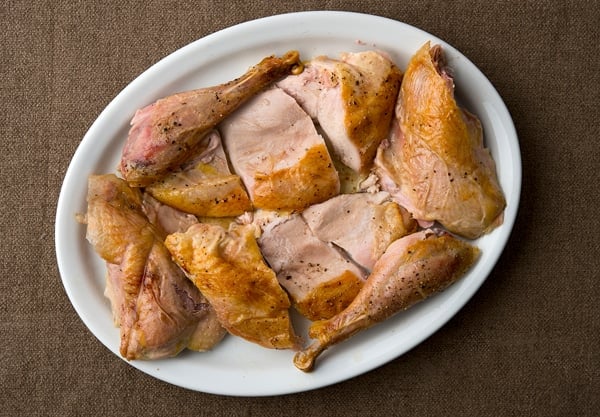
When life gives you a beautiful pheasant, one that you have not shot up, you should roast it whole like a chicken. But a pheasant is not a chicken — it can get dry and ugly very fast if roasted poorly. That’s where this recipe comes in.
I designed this recipe for young birds, but I have also found that ranched birds are ideal; you can often find whole pheasants in places like Whole Foods or other specialty markets.
This roast pheasant recipe, unlike many of the others you may have seen, relies on a few special tricks. One is an eight-hour brine; this will season the bird and help it to retain moisture.
Brining is a critical step when roasting lean game birds such as wild turkey, pheasant, sharp-tailed grouse, or even smaller birds such as chukars or quail. You risk dry birds if you skip this step.
It can also help chicken or Cornish game hens, although you’ll need to check, as many store-bought chickens are pre-brined.
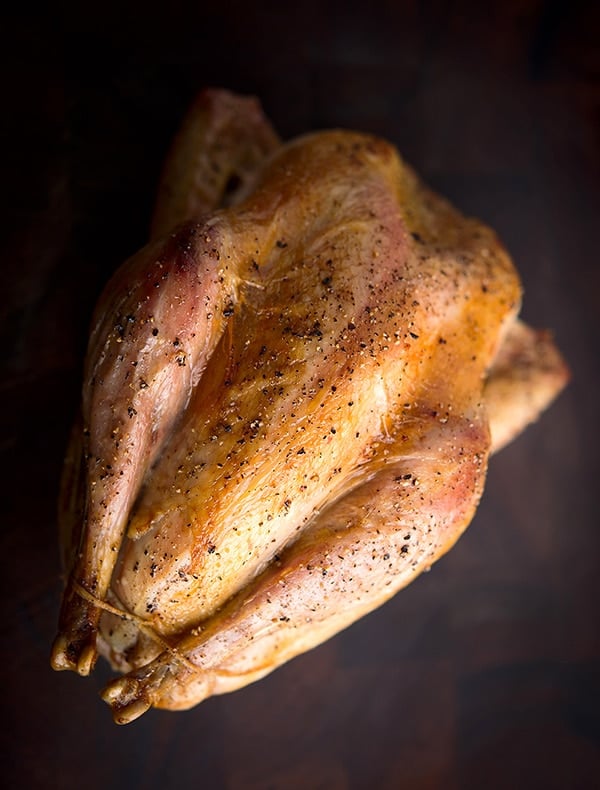
Another trick is a searing hot oven, followed by a stint in a cooler oven. This isn’t a terribly new idea, and if you happen to have the Englishman Hugh Fearnley-Whittingstall’s The River Cottage Meat Book, he goes into this pretty thoroughly. I like my second, cooler step a bit cooler than he does, however.
The third is resting the bird. Fearnley-Whittingstall is big on this, but then again so are all cooks worth their apron.
Serve your roast pheasant with root vegetables, mashed potatoes or roasted Brussels sprouts. A big white wine or a light red is a good choice, as is a hard cider or pale ale.
Roast Pheasant
Ingredients
- 2 whole pheasants
- 8 cups water
- 1/2 cup kosher salt
- 2 tablespoons sugar
- 2 bay leaves, optional
- 1 tablespoon crushed juniper berries, optional
- 2 tablespoons olive oil or softened butter
- Black pepper to taste
Instructions
- Brine the bird. Make a brine by bringing the water, salt, bay leaves, juniper and sugar to a boil. Cover and let cool to room temperature. When it cools, submerge your pheasant in the brine and keep it in the fridge for 4 to 8 hours. The longer you brine, the saltier the pheasant will become. I brine pen-raised birds for 4 hours, old roosters for 8 hours.
- Optional step: If you really want a crispy skin, take the birds out of the brine and set them uncovered in the fridge for 12 to 24 hours. This dries out the skin (but not the meat} and helps you get crispier skin.
- When you are ready to cook, take the pheasant out of the fridge and let it sit at room temperature for at least 30 minutes and up to an hour. Heat your oven. Get it to 500°F if possible, but at least 400°F. Give yourself at least 15 minutes of preheating, and up to a half hour. Oil the bird. You can do this with olive oil or you can smear butter all over it. Crack some black pepper over the bird.
- Stuff with a piece of onion or apple and a few fresh herbs. A cut lemon is a good choice, too. Do not pack the cavity. Truss the bird if you want. I do this often because it helps the pheasant cook more evenly. (Here's a video on how to truss a chicken, which is basically the same thing as a pheasant.)
- Roast the pheasant uncovered for 15 minutes at your high temperature. Take the pheasant out and lower the temperature to 350°F. Leave your oven door open to speed this process.
- Optional step: Baste the bird with either butter or a glaze. When I do this, I like to use a boiled-down combination of butter and maple syrup.
- Return the pheasant to the oven and roast uncovered for 30 to 45 minutes. You want the internal temperature of the thigh meat to be about 155°F to 160°F and for the bird’s juices to run pretty clear. A little pink in the juice — and in the bird — is what you want. The higher end of this cooking time will give you a well-done bird, which I try to avoid but many people prefer.
- Remove the pheasant and let it rest for 10 to 15 minutes. This resting time is vital, as it lets the juices redistribute within the pheasant. It will also finish off the cooking process through carry-over heating.
Nutrition
Nutrition information is automatically calculated, so should only be used as an approximation.
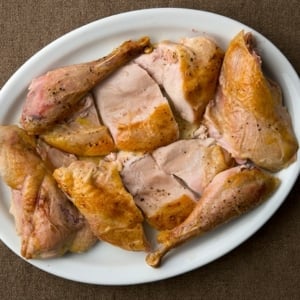
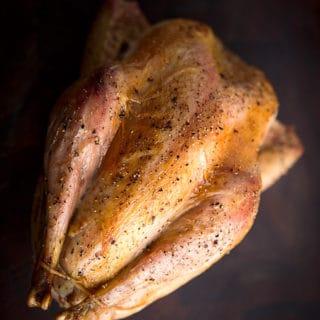
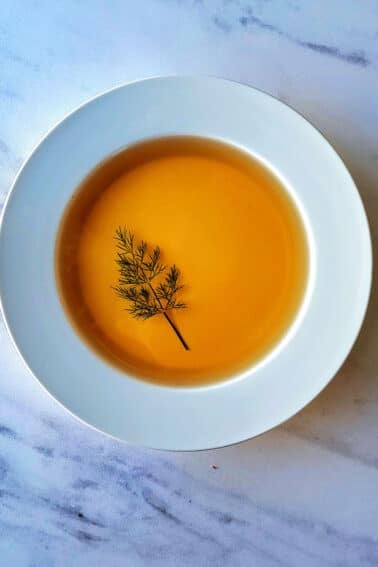


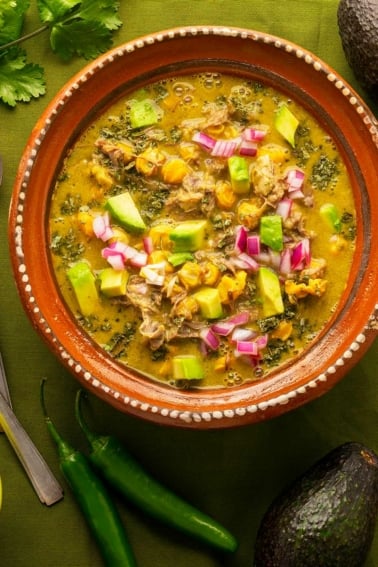
thank you so much for the recipe and the method!
this is the first time I ever tried to roast a pheasant on my own and it came out lovely! carry on! well done!
Got a “you have to do this again” from the bitter half! Unfortunately have not plucked many birds. It is a pain but need patience to keep from tearing the skin. My oven is convection so fortunately checked at 20 minutes in 350 mode and was well over 165 but it was still moist and with positive response I will be plucking more birds from now on. Aged 4 day with feathers and 3 days before brining for 8 hrs and dry 8 hrs. This was a young wild SD bird.
Unfortunately I only find frozen pheasants here
And the one I was cooking had pieces of skin missing on the breast. So I put a couple of slices on the breast and some apple and spring onions ? beside, put it in a roasting bag and popped it into the oven as per your instructions
I love your recipe as it does not involve searing in a pan
Let’s hope it turns out good ?
I have roasted pheasants this way – and they were great.
But i am writing about your recent recipe of putting the pheasant in a pan, and spooning butter over them (i CANNOT find that recipe now!?) Anyway, i had a pretty large pheasant (i just put one in the pan) and it just didn’t cook – it was raw on the inside after doing everything as directed. Had to microwave the meat, which of course, ruined it. Darn. Would try the reicpe again if you could give me some tips. I had trouble regulating the temp of the butter (I used half veg oil, half butter) – it would get too hot, and start to burn, and it just wasn’t the best experience! Help.
P.S. my FAVORITE recipe is the thai curry pheasant soup.
Jackie: That’s not a recipe for pheasants, they are too large for that technique. It is a recipe for partridges or small grouse or quail.
This was excellent! I used apple for the stuffing. It came out delicious.
What is the ratio for you maple syrup and butter glaze?
Madison: 50-50.
I have used this recepie multiple times, one and 2 birds. Consistently excellent results. I use a little less salt for brine but otherwise everything the same. I also use apple and sometimes orange slices for stuffing with some lemon juice. Love your recipe. Best out there! Truly best!
Tried this recipe twice, both times DELICIOUS!
You recipe calls for two pheasants but you keep referring to the pheasant in the singular. Are these cooking times for one pheasant or two pheasants side by side in the oven?
Will: Two side by side. The number of pheasants doesn’t really matter.
hank- brined the birds-a bit salty- should i have rinsed them before air drying?
Hippie: Either that or brine for less time.
Hey Hank, Help! I was getting all ready to Brine the birds but when I “unpacked” them I saw that they were skinned! I assume I will have to make some changes to the recipe. Can I still roast them or what are my other options? 🙁
Patricia: I would not roast a skinned bird. I have dozens and dozens of pheasant recipes that will work with a skinned pheasant here: https://honest-food.net/wild-game/pheasant-quail-partridge-chukar-recipes/#pheasants
Looking for a point of clarity. I assume you are using a plucked pheasant, so skin in tact? I took the easy way out cleaning the birds in the field, and therefore skinned the bird.
TNack: Yes, always a plucked pheasant.
/We got two pheasants from a friend and I was thinking of using your recipe. However we are diabetic and can’t do sugar. Is it absolutely necessary for the brine?
Patricia: No, you can skip it.
9500 mg of sodium per serving? NINE thousand????? I am advised by my cardiologist to try to keep my sodium intake at 1500 mg or less per day — so there’s almost a week’s worth of sodium in one serving of this for me. I would have to skip the brine, dry meat or not.
Lizzie: Don’t believe those numbers. I am required to input the raw ingredients into a calculator for Google search, and the calculator assumes you are eating all the salt in the brine. Stupid, but there’s nothing I can do about it. I can assure you the pheasant isn’t overly salty, and that you aren’t getting that much sodium.
Hank is absolutely correct. The numbers are assuming you drank they entire brine.
I just cooked this recipe this evening for a fresh pheasant I shot last week and aged for eight days. It was not at all salty, and that’s including the fact I salted the cavity and surface before roasting.
This calls for 2 pheasants, but I only have 1. Do I cut the brine ingredients? or keep the same? Thanks!
Heity: I’d keep it the same so you can easily submerge the bird.
Bit too salty and not as juicy as I hoped.
I used 3/4 amount of salt for 8 hours.
After 30 min. at 350°F (convection), the thigh temp was already 177°F.
Definitely will do less salt and shorter roast next time.
I did this with wild pheasant and ruffed grouse (10 minutes less cook time) and both were absolutely superb. Juicy, tender, and flavorful. No dry chewy meat. The legs cooked perfectly and same time as the breast. I did not do the glaze but used simple herbs and also added a garlic clove to the cavity.
Question…neither bird skin browned well in my roaster. It only goes to 450 degrees. Would searing the skin quickly on a cast iron work just the same??
Neal: Yes, but undercook your bird a little in the oven first.
This was truly wonderful – made our weird-year Thanksgiving special. Our oven’s convection fan shortened the cooking time a little (glad we checked when we did for doneness, sorry we didn’t note the time difference). Thanks for a wonderful treat.
This simple recipe was awesome. My wife roasted my first bird of the year after aging it for 24 hours. Thanks, Hank!
I know this is going to sound like a ridiculous question, but I don’t keep white sugar in the house and I am not sure I want to buy it just for brining. Does the sugar serve a mechanical function, or is it to flavor the brine? Can I sub in something like stevia? Or even brown sugar?
Sara: Yes, it serves a purpose. Sugar helps draw out moisture in much the same way salt does. Use brown sugar, not stevia.
Perfect. I couldn’t have imagined it coming out any better. I made a sauce with some reduced chicken stock which I barely even used because the pheasant was so moist and delicious on its own. The pheasant I had was pen-raised and the 4-hour brine gave it the perfect amount of salt content.